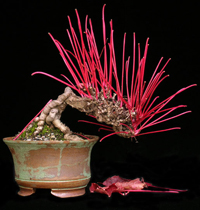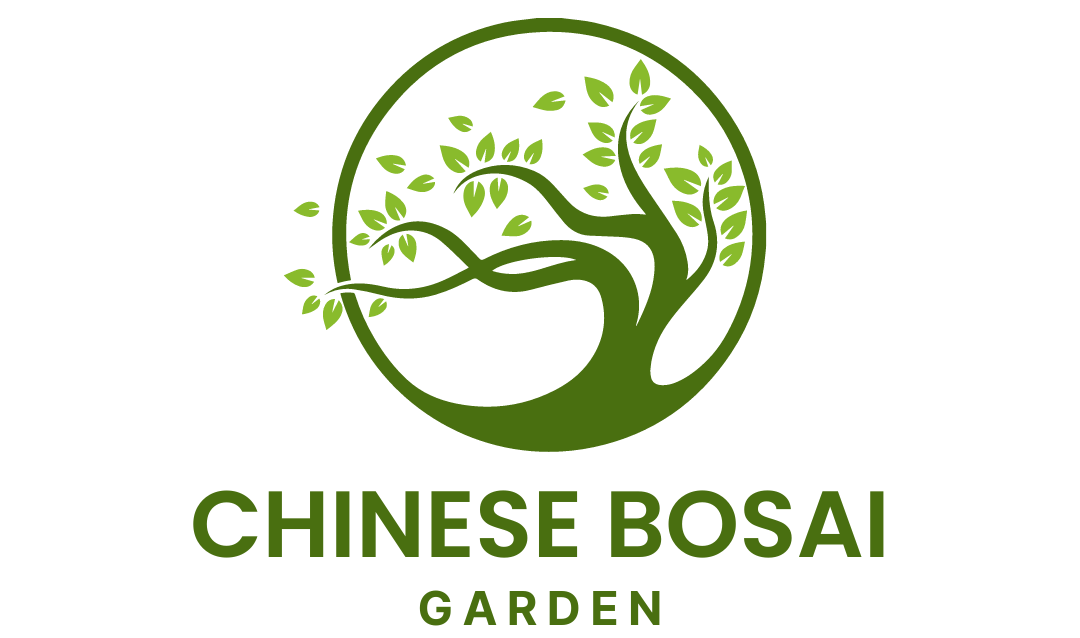
Bonsai originated in China and was introduced to Japan about 500 years ago where it began to develop in its own way. These days, bonsai is a serious art form that regularly has exhibits and auctions around the world. The word “bonsai” came from the Chinese word “pun sai”, which means “tree in a pot”.
Many beginners think that bonsai is a special kind of small plant. In reality, bonsai are REGULAR trees or shrubs that were transplanted into a small container resulting in suppressed growth.
Like normal trees they go through seasonal changes which are flowering, fruiting, shedding leaves, and dormancy. Therefore, bonsai like regular trees needs to be grown outdoors to take advantage of the weather during all four seasons.
Growing Bonsai Indoors
Keeping a bonsai at home will create multiple problems for the tree like the amount of light it is getting and humidity levels. An unnatural environment will eventually kill the tree even if it survives for the first few months. To avoid death of the outdoor tree, you should take it outdoors, so it can regain its strength.
Some tropical and subtropical species will do better indoors for a period of time. They like warm climates and will not survive outdoors during winter if you live in a cold area. But even they need to be taken outdoors during summer. You will never be able to provide the right amount of light and humidity indoors. Here are some bonsai that will grow indoors.
Where to Buy Bonsai
Most of the beginners get their bonsai from a garden center, shopping mall or a large improvement store like Home Depot or Lowes. Last week, I was very surprised to see bonsai at a Wegmans which is a grocery store.
Usually, it is an impulsive purchase that people make when they see a cute little tree and not a planned decision to start a new hobby. Most of the time, those trees had very little training and were growing in poor soil. I can’t even call them a bonsai. They are just a bonsai material that can be turned into a bonsai with proper care and training.
Since outdoor trees can survive indoors for a few months, dealers sell them as indoor bonsai. Very often, that tree has been sitting indoors for quite some time before you bought it. S,o don’t be surprised if your bonsai starts to decline and dies within a few weeks.
The BEST place to buy a bonsai is from a bonsai nursery where it gets proper training and care. Since I don’t know what nurseries you have around, I recommend getting bonsai from Bonsai Boy Nursery which is located in NY. Their bonsai are high quality and VERY reasonably priced.
Repotting and Root Pruning
To keep a bonsai small, you need to do regular root pruning and repotting. Otherwise your plant will grow very long roots that will push it out of the pot. If that happens, the tree won’t be able to absorb nutrients or water and will start to decline.
To keep it healthy and vigor, you have to trim about 1/3 of the roots annually. Some of the fast-growing plants might require pruning and repotting more often.
It is important to understand that the main goal of root pruning is to keep the tree healthy. For repotting you would use a special bonsai soil that drains much faster than a regular potting. One downside of this soil is that it doesn’t hold nutrients very well. Therefore, you have to regularly fertilize your plant during the growing season.
Bonsai Soil Mix
It might come to you as a surprise, but good quality bonsai soil mix has NO SOIL in it. That’s right, bonsai soil usually consists of fired clay, grit, and some type of organic material like pine bark.
In Japan most of the bonsai masters use Akadama or Kanuma which are backed clay. Both of them are pretty expensive here because of the shipping cost. I personally like to use Turface or Lava Rock. Both of these products are widely available and less expensive. They have high water absorption, fast drainage, and good aeration.
You can buy a bonsai soil or you can mix it yourself. If it is your first bonsai tree, I would recommend buying a soil mix. Once you have more than 3 trees, repotting can get very expensive. At that point, you should buy all the ingredients and mix them yourself.
Watering
Proper watering is another problem that many beginners face. While different species have different watering needs, the rule of thumb is to water the plant thoroughly once the soil becomes slightly dry.
Overwatering or underwatering is one of the common problems in bonsai care. Regular overwatering can lead to root rot, a decline in the health of the tree, and ultimately death.
If you are going on vacation, make sure you have somebody to take care of your trees. The best choice would be to find a bonsai nursery near you that offers vacation care service. Knowing that your trees are properly cared for will give you a piece of mind.
Fertilizing
Since most bonsai soil mixes consist of inorganic materials that don’t hold nutrients very well, they need to be fertilized on a REGULAR basis. A well-balanced fertilizer has the same percentage of the main ingredients which are Nitrogen: Phosphorus: Potassium or NPK.
It DOESN’T matter if the fertilizer is organic or inorganic as long as it has the right percentage of NPK.
I personally, like to use a slow-release inorganic fertilizer because it doesn’t affect the drainage unlike organic and lasts for a long time. The best time to fertilize is during the growing season. Avoid fertilizing a sick tree.
Wiring
Wiring is a very important technique that is used to style and manipulate the structure of the tree. If you don’t like wiring, it would be hard for you to create a bonsai. There are two types of wire used for bonsai: aluminum and copper.
Copper is less forgiving and is more difficult to apply. Aluminum is easy to use and easy to remove.
I personally like to use brown anodized aluminum wire. It is less expensive than copper and has an anodized coating that protects it from corrosion. Its brown color allows it to blend in with the bark of the tree making it less prominent.
When applying the wire you want to wire towards yourself at a 45º degree angle. If the coils are too loose, it will not have any effect on the tree. If they are too tight, it might restrict the sap flow resulting in the death of the branch.
Final Thoughts
Remember, the bonsai is a living art form therefore your work is never done. It will always surprise you with its changing shape. While there are different rules and techniques that will help you along the way, the best way to learn is to mimic the trees around you. Nature is truly the BEST teacher.
Most importantly, have FUN and use your imagination. Don’t be afraid to experiment and make a mistake. We ALL make mistakes. That is how you learn and that is how you create amazing inspiring bonsai art.
